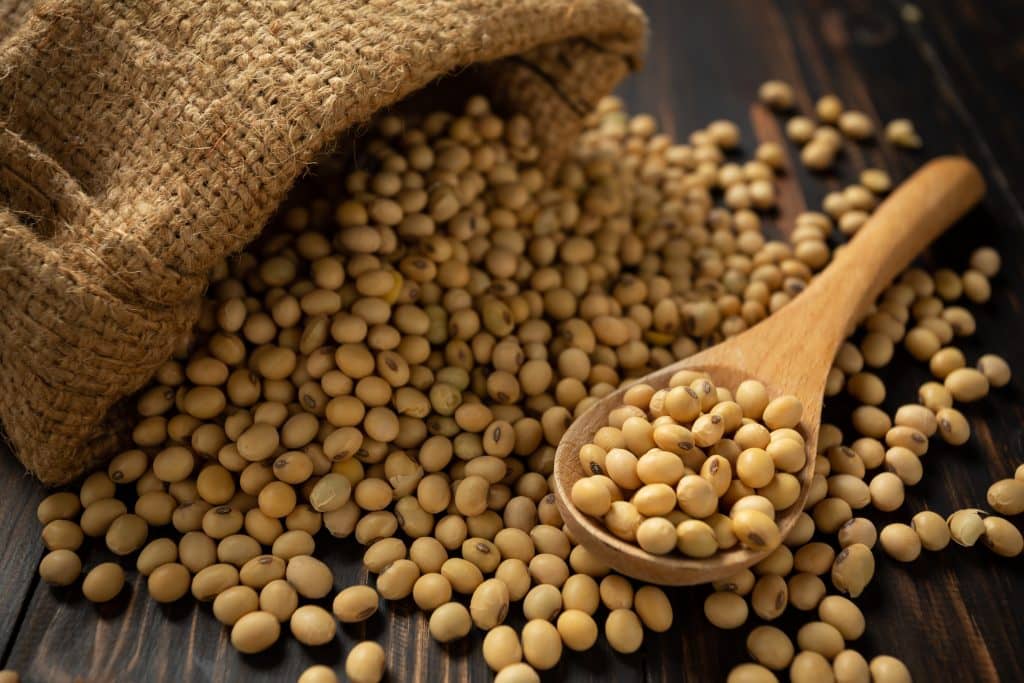Brazil’s soybean cargoes sold in rare arb to US East Coast crusher

Up to three cargoes of Brazilian soybeans were traded on Friday to a US East Coast crusher in what is an atypical movement for this time of year, trade sources have told Agricensus.
The three cargoes were traded on a last half February shipment basis at a 135 c/bu discount to CME’s March futures soybean contract, with the cargo likely to depart from Brazil’s northern arc ports along the Amazon River.
The presence of heavy discounts for physical Brazilian soybeans versus the Chicago futures contract is itself unusual at this time of the year – so early in the export season – and reflects how well-supplied much of the world’s agriculture complex currently is.
Agricensus could not confirm whether the cargoes were expected to load from the Brazilian ports of Itacoatiara, along the Amazon, or Barcarena on the Brazil’s Atlantic coastline.
The US East Coast buying a few volumes of Brazilian soybeans is normal around May, when the Brazilian harvest is in its final stages and US soybean availability gets short, but atypical for such a trade to occur in January, as the Brazilian harvest is usually in the very early phase.
“They import corn and/or soybeans every year, but not this early. It’s not surprising given the import parity,” said Terry Reilly, Marex’s head of grains and oilseeds analysis.
Plunging Brazilian soybean prices have made the arbitrage viable as prices reach import parity with US East Coast destinations, as US domestic prices have remained virtually stable.
Brazil’s FOB Santos March loading was assessed at 105 c/bu discount to March futures on Friday, while US Gulf March offers were heard at 82 c/bu over March futures.
The South American country is expected to harvest 155.2 million mt during the 2023/24 season, marginally higher than the record 154.6 million mt collected in 2022/23.
While those figures are lower than initial, inflated expectations for the country’s 2023/24 harvest, the overall South American crop is still expected to be considerably higher than last year, as Argentinian production is expected to roar back after several drought hit years.
The US Department of Agriculture expects 217.3 million mt to be produced across the three major exporters (Brazil, Argentina and Paraguay) – up over 11% when compared to the 194.75 million mt produced in 2022/23.
At the same time, Chinese companies’ appetite for imported soybeans is softer than expected at this time of the year, as domestic hog production margins have suffered amid a glut of production.
“Premiums here are falling amid the start of harvest and the Chinese industry’s lack of buying interest,” Aldo Lobo, a broker at the Brazilian brokerage Origem told Agricensus.
“Soybean meal on the DCE (Dalian Commodity Exchange) hit a 40-month low,” Eduardo Vanin, lead analyst at Agrinvest said in a note to clients.
“The spread (price difference from one port to another) between FOB Paranaguá versus FOB US Gulf has increased much faster and earlier than the last year, opening the arbitrage window way earlier,” Vanin added.
Read also
Wheat in Southern Brazil Impacted by Dry Weather and Frosts
Oilseed Industry. Leaders and Strategies in the Times of a Great Change
Black Sea & Danube Region: Oilseed and Vegoil Markets Within Ongoing Transfor...
Serbia. The drought will cause extremely high losses for farmers this year
2023/24 Safrinha Corn in Brazil 91% Harvested
Write to us
Our manager will contact you soon



